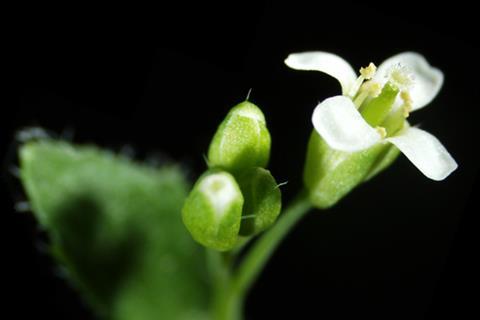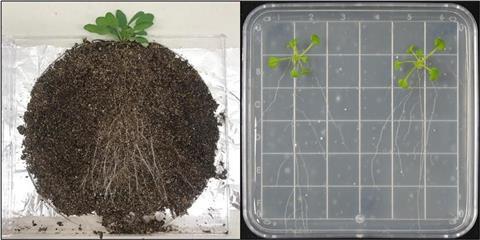Animals and plants form complex symbiotic communities with microorganisms, the so-called microbiome. A research team from Heinrich Heine University Düsseldorf (HHU) and the Max Planck Institute for Plant Breeding Research (MPIPZ) in Cologne has now investigated the three-dimensional microbiota structure around plant roots.

In the scientific journal Cell Host & Microbe, they report that microbial community composition varies along the root and that this is influenced by the root spatial metabolism.
People are colonised by a large number of beneficial organisms. In the intestine in particular, the so-called gut microflora play an important role in human health. Such a phenomenon is also seen in plants – they also possess “microbiota”: Microorganisms that help make nutrients in the soil available and defend the plant against pathogens.
Intestine segments
The human intestine comprises different segments and each of these segments has a specific function. Around ten years ago, molecular investigation revealed that the segments of the guts have specific stem cells and different metabolic activities.
The various physiological and genetic differences in the intestine result in differential microorganism colonisation in each segment of the intestine. It is now known that the gut microbiota have a highly complex three-dimensional biogeography.
In order to investigate whether the root microbiota also display biogeographical differences, three research teams at HHU and MPIPZ conducted joint research on the model plant thale cress (Arabidopsis thaliana). The researchers took a so-called “multiomics” approach, including “transcriptomics” – the analysis of all RNA molecules in the tissue – and “metabolomics” – the study of the metabolic network – as well as other disciplines such as synthetic biology and bioinformatics.
Two growth systems
In the current issue of Cell Host & Microbe, the biologists describe the development of two growth systems to enable them to analyse the root microbiota of Arabidopsis: CD-Rhizotrons and ArtSoil growth media. With the help of these two systems, they proved the existence of spatial organisation of the microbiota along the longitudinal axis of the root, as well as a corresponding differential accumulation of plant metabolites and metabolic activities.

Lead and corresponding author Dr Eliza Loo from the Institute for Molecular Physiology at HHU comments: “Using bioinformatic and genetic methods, we identified three so-called SWEET sugar transporters, which contribute to the distribution of sugar and other metabolites along the root. These transporters are necessary for the spatial colonisation by root bacteria.”
Decoding the network
“We were able to decode the complex metabolic network between microbes and host – in this case the plant,” adds Dr Tin Yau Pang from the Computational Cell Biology research group at HHU.
“These findings can contribute to optimising microbial communities to improve plant protection from pathogens, leading to better plant health,” says Dr Paloma Durán from MPIPZ, the second lead author of the study.
Professor Dr Wolf Frommer, Head of the HHU Institute for Molecular Physiology and corresponding author, comments: “In order to understand the spatial colonisation of the host microbiome, a much more detailed analysis of the 3D biogeography of both the plant and the microbial species will be necessary. Our current publication lays the foundation for such work. Studies should now be expanded to crop plants such as barley.”
Topics
- Arabidopsis thaliana
- ArtSoil
- Bioinformatics
- CD-Rhizotrons
- Eliza Loo
- Healthy Land
- Heinrich Heine University Düsseldorf
- Max Planck Institute for Plant Breeding Research
- Metabolomics
- Paloma Durán
- Research News
- Soil & Plant Science
- SWEET sugar transporters
- Synthetic Biology
- Tin Yau Pang
- Transcriptomics
- UK & Rest of Europe
- Wolf Frommer







No comments yet